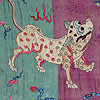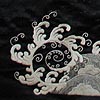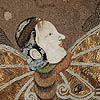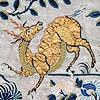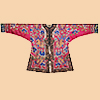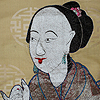 |
|
 |
Denman Waldo Ross (1853-1935) was an American painter, art collector, and scholar of art history and theory. He was a professor of art at Harvard University and a trustee of the Museum of Fine Arts Boston.
Ross completed his undergraduate studies at Harvard University in 1875, and earned his doctorate in political economy from the same institution five years later. He came to be interested in art soon after this, and began teaching courses in design and art theory at Harvard by 1889. Ross would spend much of the rest of his life lecturing on these and related topics, working with the Museum of Fine Arts, Boston on their burgeoning Oriental Art department, and traveling the world in search of artworks to add to his personal collection. Ross was also a member of some of Boston's elite inner circles, and is known to have brushed elbows not only with other prominent people associated with the Museum of Fine Arts and the art world, but also with the likes of Louis Brandeis John Singer Sargent, Joseph Lindon Smith and various members of Boston's most prominent families.
A number of his students at Harvard, the Museum of Fine Arts, and elsewhere he lectured, went on to become prominent artists. Hyman Bloom and Jack Levinewere among these.
The collection of objects donated by Ross to the Museum of Fine Arts over the course of his career as a collector covers a wide geographical, chronological, and material diversity. He collected a myriad of European art objects, along with a great many Chinese and Japanese paintings and textiles. Among the many objects in the Denman Waldo Ross collection at the Museum are a stone head from a 7th century Chinese scroll painting attributed to Yan Liben, a set of folding screen paintings of Hanamachi pleasure quarters, and a number of Chinese Buddhist steles and paintings.
Magical Chinese Unicorn Qilin
The Qilin or Chinese unicorn is a mythical beast that symbolizes good luck and prosperity. According to tradition in China, A Qilin would appear to signal the birth or death of a particularly benevolent ruler or sage scholar. Because of its association with good luck, and its peaceful, vegetarian nature, the Qilin is sometimes called the "Chinese unicorn" in the western world, but it does not particularly resemble a horned horse.
In fact, the Qilin has been depicted in a number of different ways over the centuries. Some descriptions state that it has a single horn in the middle of its forehead - hence the unicorn comparison. However, it may also have the head of a dragon, the body of a tiger or a deer, and an ox's tail. The Qilin is sometimes covered with scales like a fish; at other times, it has flames all over its body. In some tales, it can also spout flames from its mouth to incinerate evil people.
The Qilin is generally a peaceful creature, however. In fact, when it walks it steps so lightly that it doesn't even bend down the grass. It can also walk across the water's surface.
The Qilin first appeared in the historical record with the Zuo Zhuan, or "Chronicle of Zuo," which describes events in China from 722 to 468 BCE. According to these records, the first Chinese writing system was transcribed around 3000 BCE from the markings on a Qilin's back. A Qilin is supposed to have heralded the birth of Confucius, c.
552 BCE. The founder of Korea's Goguryeo Kingdom, King Dongmyeong (r. 37-19 BCE), rode a Qilin like a horse, according to legend.
Much later, during the Ming Dynasty (1368-1644), we have solid historical evidence of at least two Qilin showing up in China in 1413. Actually, they were giraffes from the coast of Somalia; the great admiral Zheng He brought them back to Beijing after his fourth voyage (1413-14). The giraffes were immediately proclaimed to be Qilin. The Yongle Emperor was naturally extremely pleased to have the symbol of wise leadership show up during his reign, courtesy of the Treasure Fleet.
Although traditional depictions of the Qilin had a much shorter neck than any giraffe's, the association between the two animals remains strong to this day. In Korea , the term for "giraffe" is Kirin, or Qilin.
Across East Asia, the Qilin is one of the four noble animals, along with the dragon, the phoenix, and the tortoise. Individual qilin are said to live for 2000 years, and can bring babies to deserving parents much in the manner of storks in Europe.
Posted by ancient chinese culture in Mysterious Emblem on June 25, 2009
Along with tortoise, dragon and phoenix, Qilin is one of the four holy animals in Chinese mythology. It is sometimes described as unicorn in English. However, actually, in many depictions, it has two horns. It has the head of a dragon, the body of a deer, the tail of an ox and the hooves of a horse.
Qilin is always depicted as a gentle and friendly animal. When it walks on flowers and grass, it never cause any harm to them. It eats a vegetarian diet and avoids causing harm to any living beings.
It is associated with sages and other wise people and it will only appear in areas ruled by a wise and benevolent leader. It is said to be a bringer of glad tidings, foretelling that a sage or a great people is to come. Legend has it that a qilin appeared to the pregnant mother of Confucius. Therefore, in Chinese old custom, the pictures of qilin were always displayed in the pregnant motherís bedroom in the hope of bearing a child of great intelligence.
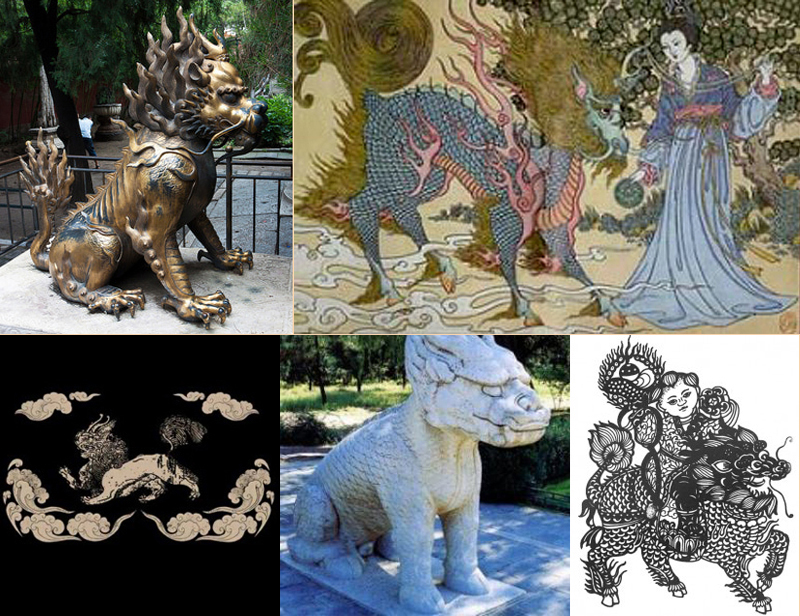
|
 |

